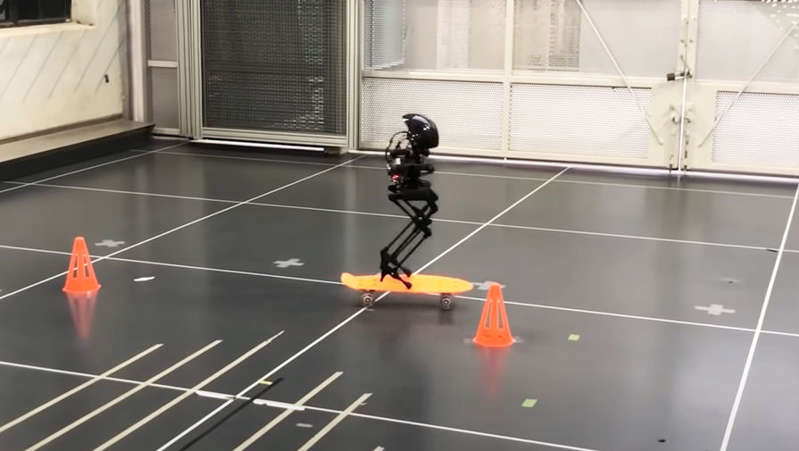
American engineers made a drone with legs that can walk and fly
Engineers at the California Institute of Technology have created a hybrid of a walking robot and a flying drone. An article about this was published in the journal Science Robotics.
The robot was named LEO, or completely – LEONARDO, short for LEgs ONboaRD, “feet on board.” Despite this name, the specialists had to design the car from scratch to achieve stability in both modes.
“Depending on the types of obstacles it needs to overcome, LEO can choose to walk, fly, or a combination as needed.
In addition, LEO can move in a way that is not accessible to all people, for example, he walks on a tightrope and rides a skateboard, “
But LEO was not built for gimmicks. The developers hope that a hybrid of a robot and a drone will inherit the advantages of both types of machines, but will be devoid of their disadvantages. The walking chassis can carry a lot of weight, but it is difficult to control it in real conditions: bipedal and four-legged robots have been on the free market since the beginning of the 21st century, but they could only move on a flat floor.
Robots were taught to walk on stairs, snow, grass, as well as to step over obstacles only a few years ago, the most famous examples of this are the humanoid ATLAS and the dog-like SPOT from Boston Dynamics. But even for these dexterous machines, a sheer wall or river will become an insurmountable obstacle, and moving through the rubble can be dangerous.
Impenetrable terrain is not a hindrance to a flying vehicle, and it has many other advantages. On the other hand, it consumes a lot of energy, it can not carry much and, most importantly, it is problematic for it to interact with ground objects where serious efforts or great accuracy are required. The drone will need very reliable stabilization in order to tighten the nut, and hammering in the nail will most likely not work at all.
LEO weighs 2.5 kilograms and reaches 75 centimeters in height. He walks on two legs with three articulated joints, and flies on four screws located in the shoulder area. The leg motors are miniature gearless brushless motors. The heels of the feet are made so that they can stand firmly without actively maintaining balance. The robot has a battery on board, an on-board computer, Wi-Fi for communication with the operator, ground contact sensors and a camera for navigation. The LEO “head” is protected by a special helmet in case of falls. The propellers are used not only for flight, but also for maintaining balance, due to which the robot can walk along the tightrope.
Scientists say that they took their concept from wildlife – they were inspired by birds that combine the ability to fly with confident walking.
LEO, however, is just a prototype created to prove the realism of the concept of a hybrid vehicle. In the future, the descendants of LEO could be entrusted with difficult or dangerous jobs, such as inspecting and repairing damaged infrastructure, installing new equipment in hard-to-reach places, or providing assistance in the event of natural disasters and industrial accidents. The authors do not deny that such a robot can be used for military purposes.
Going forward, the team plans to improve on LEO by adding more strength to the leg structure that can support the increased weight, as well as increase the thrust of the engines. In addition, they hope to make LEO more autonomous, so that the robot can understand how much of its weight is supported by its legs and how much by propellers when walking on uneven terrain.
The researchers also plan to equip LEO with a newly developed drone landing control algorithm based on a self-learning neural network. With a deeper understanding of the environment, LEO will be able to make its own decisions about the best combination of walking, flying or hybrid movement to move from one point to another with the optimal investment of time and energy.

